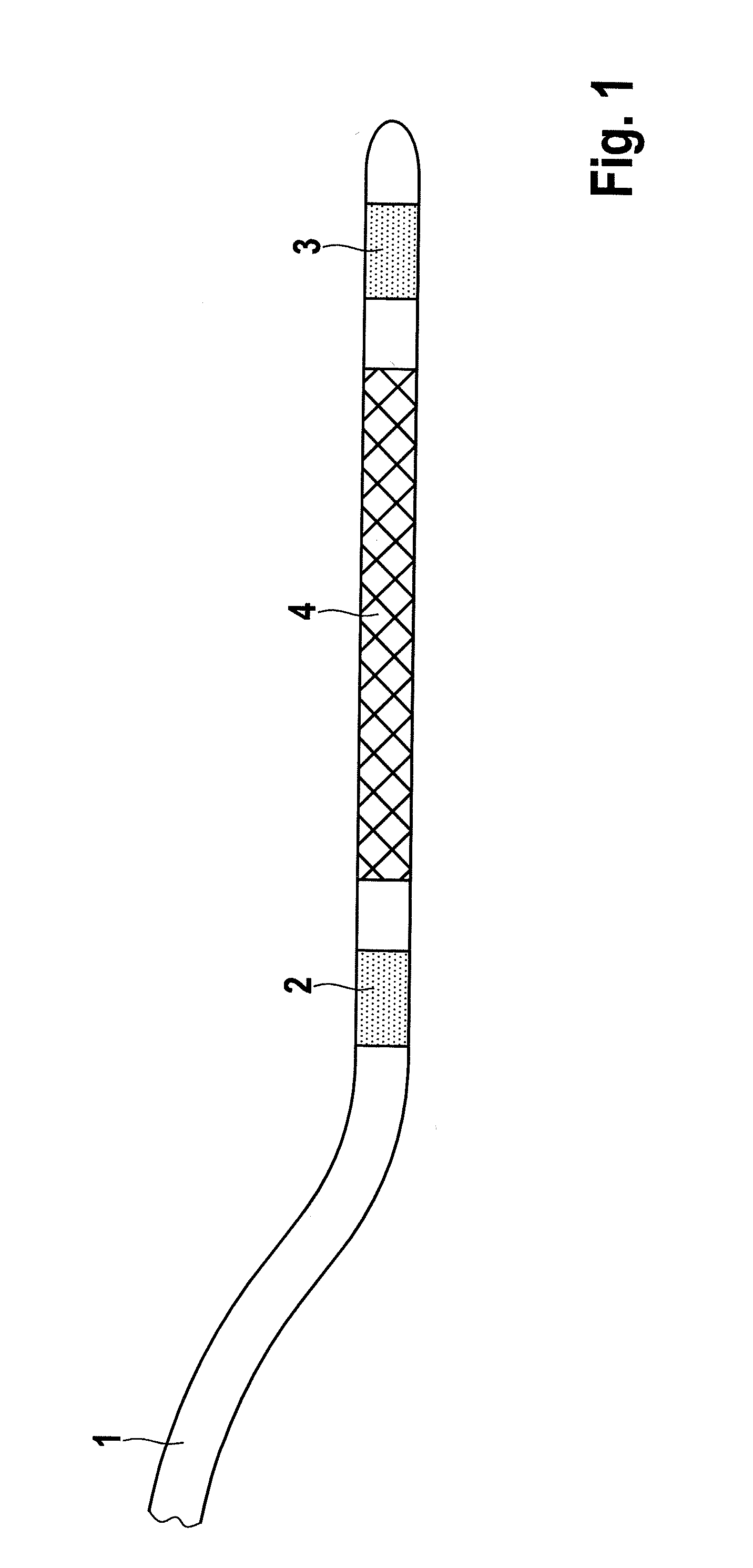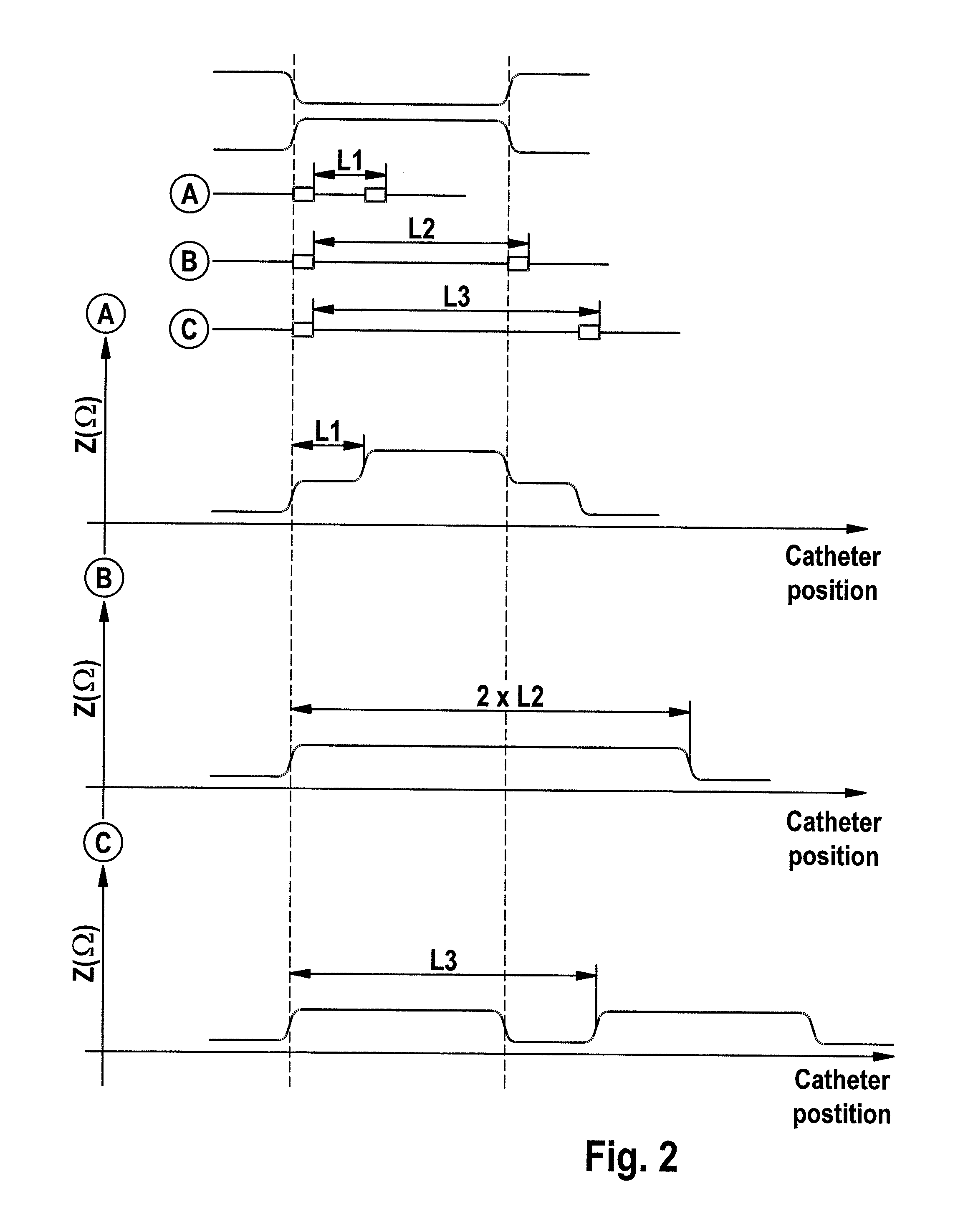Positioning catheters using impedance measurement
a technology of impedance measurement and positioning catheter, which is applied in the field of positioning catheters using impedance measurement, can solve the problems of lag period in the method, insufficient accuracy, stepwise increase in impedance, and stress on the patient, so as to reduce the impedance, increase the impedance, and increase the impedance
- Summary
- Abstract
- Description
- Claims
- Application Information
AI Technical Summary
Benefits of technology
Problems solved by technology
Method used
Image
Examples
Embodiment Construction
[0041]A catheter that can be used in a method according to the invention is depicted schematically in FIG. 1. The catheter includes a base body 1 and has two electrodes, 2 and 3, close to the end that is introduced into the blood vessel. Electrodes 2 and 3 are disposed on base body 1, separated by a distance in the longitudinal axial direction. A stent 4 is placed between electrodes 2 and 3; once stent 4 has been positioned, it can be applied in the blood vessel via expansion. This stent can be in electrically conductive contact, or not, with the surrounding blood while the catheter is being positioned in the blood vessel.
[0042]The catheter shown in FIG. 1 can be positioned using a method according to the invention such that stent 4 is located in an optimal position in the region of a stenosis. For this purpose, the catheter is first introduced into the vascular system, and is then advanced in a suitable manner toward the constriction in the blood vessel to be treated. During the ad...
PUM
 Login to View More
Login to View More Abstract
Description
Claims
Application Information
 Login to View More
Login to View More - R&D
- Intellectual Property
- Life Sciences
- Materials
- Tech Scout
- Unparalleled Data Quality
- Higher Quality Content
- 60% Fewer Hallucinations
Browse by: Latest US Patents, China's latest patents, Technical Efficacy Thesaurus, Application Domain, Technology Topic, Popular Technical Reports.
© 2025 PatSnap. All rights reserved.Legal|Privacy policy|Modern Slavery Act Transparency Statement|Sitemap|About US| Contact US: help@patsnap.com



